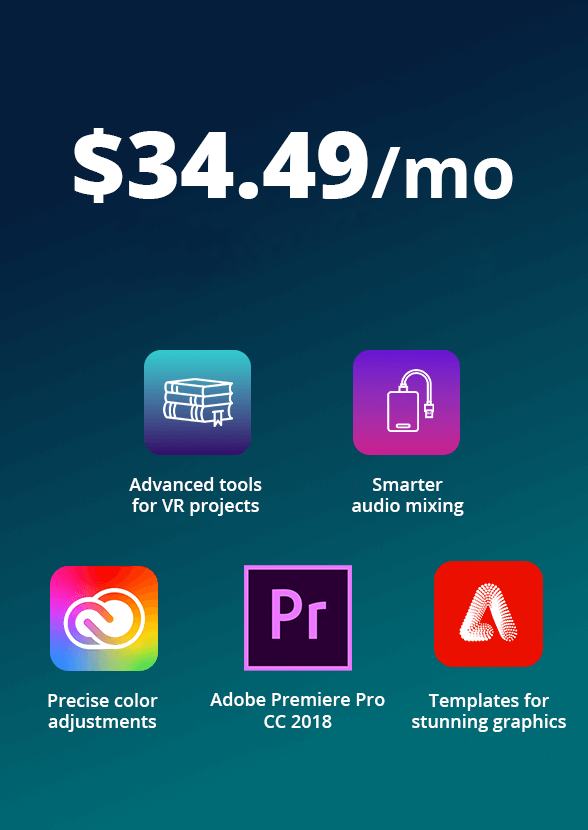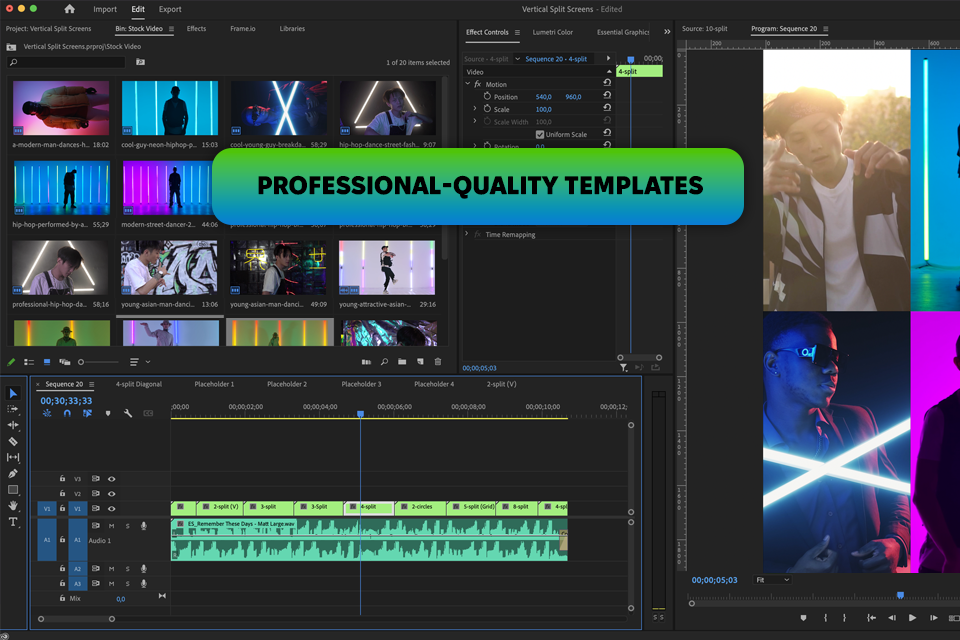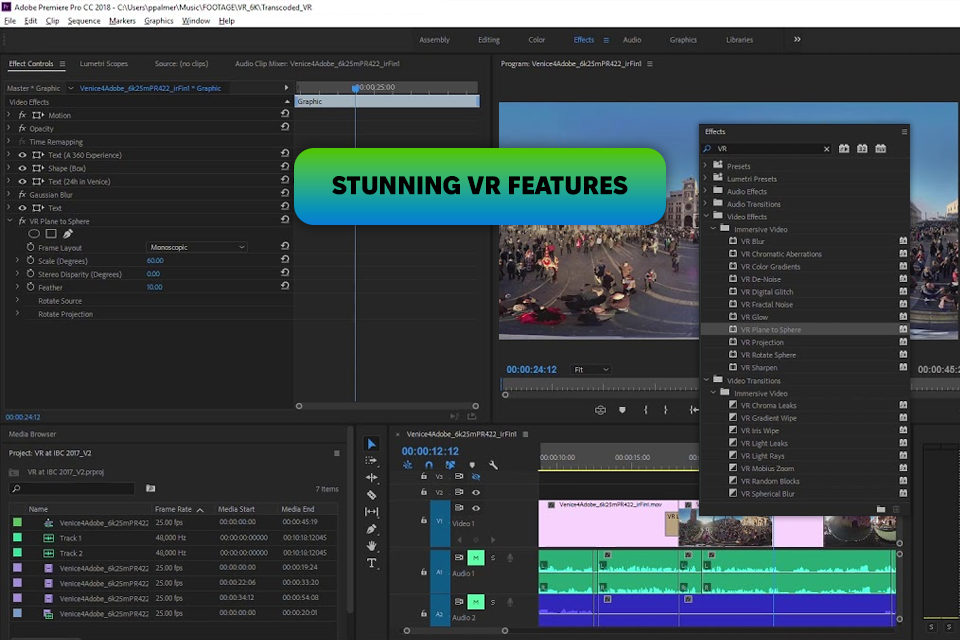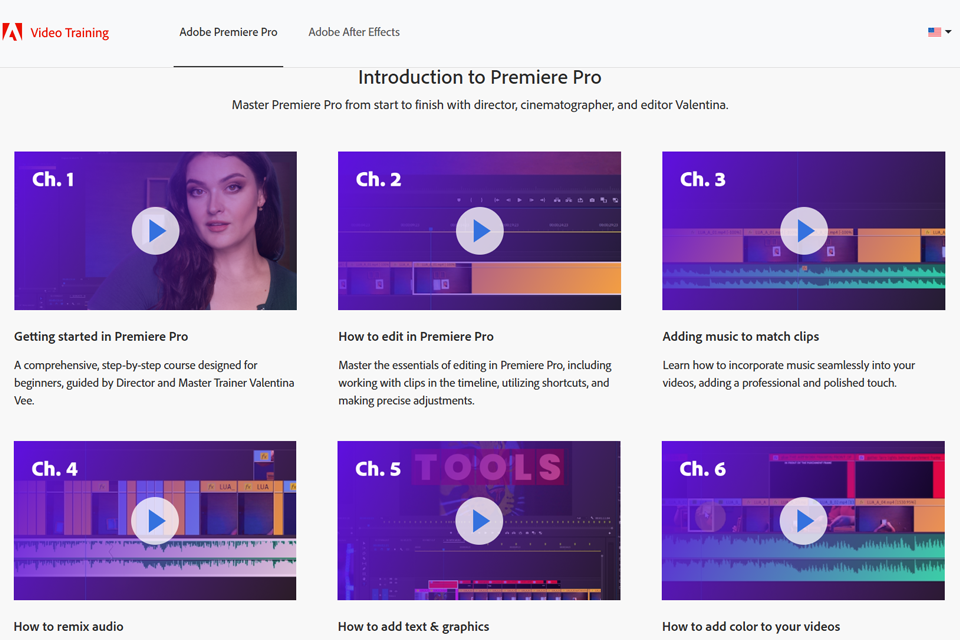Adobe has officially released the updated version of Premiere Pro CC 2018. It is created to meet the needs of today's video makers, offering improved editing tools and streamlined workflows. Besides, you can take advantage of new features, namely, Lumetri Color updates and Motion Graphics templates. Generally, this version is sure to please both professionals and hobbyists.

I made the switch from older versions of Adobe Premiere Pro, namely, CS6 and CC 2015. The older versions were fine, but sometimes the workflow became too slow. Besides, color correction tools available there were a bit confusing. The 2018 updated version is much faster and the color grading features are really intuitive.
|
File name:
|
premiere_pro_2018_mac.dmg (download)
|
|
File size:
|
3.2GB
|
|
File name:
|
premiere_pro_2018_win.exe (download)
|
|
File size:
|
3.9MB
|
|
File name:
|
premiere_pro_2018_luts.zip (download)
|
|
File size:
|
54.3KB
|
|
File name:
|
premiere_pro_2018_luts.zip (download)
|
|
File size:
|
61.2KB
|
|
File name:
|
premiere_pro_2018_luts.zip (download)
|
|
File size:
|
52.8KB
|
✔️ Templates for quick graphic creation. Adobe Premiere Pro CC 2018 cracked limitations in graphic production with its Motion Graphics features. I used the built-in templates to create graphics for my videos with ease. Instead of making creating graphics from scratch, I customized a template to match my brand. It was so easy to do.

✔️ Precise color adjustments. Another advantage of the updated software version is intuitive color grading. This color grading software has a special Lumetri panel, where you can apply color adjustments. I used it to make my latest video look dark and moody. Generally, the panel has all the necessary tools for color correction, so you don’t need to use additional plugins.
✔️ Powerful tool for VR projects. Editing VR content in Premiere Pro CC 2018 is really easy. I used the program for 360-degree video and received fantastic results. The software makes it simple to preview your edits in a VR headset and fine-tune transitions. If you want to create genuinely immersive video content, this program will come in handy.

✔️ Smarter audio mixing. I'm not a sound engineer, so I’m very pleased with automatic sound mixing tools. Using them, it is easy to get professional-sounding results. The feature that quiets the background music when there's dialogue is especially helpful.
❌ Occasional crashes when handling complex projects. I encountered sudden crashes and freezes while working on a large-scale 4K video project in Premiere Pro. Such issues typically occurred while I was packaging Premiere Pro project. No wonder, it was really frustrating. Thankfully, there is an auto-save feature. Therefore, I didn’t lose too much work, but it still was upsetting.
❌ Not very beginner-friendly. It's a bit of a challenge for newcomers to learn this software. Since I've used older versions, I picked up the new one quickly. But I can understand why someone who's never used it before may struggle with the program. My coworker had problems with basic tasks such as cutting clips and navigating the timeline. There are just so many features to learn.

❌ High hardware demands. The program requires a strong computer to run smoothly. My laptop is not very powerful, and it took a long time to finish complicated video projects. When I used the Lumetri tools to change the colors in my 4K videos, my computer got stuck. To use all the features in Premiere Pro, you probably need a high-end computer.
I've spent a lot of time working with Adobe Premiere Pro CC 2018. I understand its strong and weak points, and I believe there are certain aspects that can be improved:
Adobe Premiere Pro CC 2018 is a great video editing software. Still, the price can scare off some users. I've selected Premiere Pro alternatives that can do the same thing without costing as much.
DaVinci Resolve is a popular choice for video editing. It has powerful color correction tools that can rival Premiere's. To my mind, the free version of DaVinci is a good option for beginners, but it lacks the flexibility provided by Premiere. Another inconvenience is the lack of integration with other Adobe software, e.g., After Effects. It is very convenient to use all of Adobe CC tools together.
FXhome by Artlist is another possible replacement for Premiere Pro. It offers both video editing tools and visual effects. You can use it for smaller projects that require a lot of special effects. Still, the UI takes time to understand. The same can be said about advanced features. I think that managing large projects here takes time and effort.
For beginners and those who want to edit videos in a simple way, Shotcut is a good option. But if you need advanced features like Motion Graphics or precise color correction, Premiere is a better choice. I tested Shotcut on a short social media video. It doesn’t offer advanced tools available in Premiere, so I felt limited.
Kdenlive is a free open-source video editing alternative to Premiere Pro CC. The program offers impressive customization options and flexibility. While testing it, I encountered several stability problems. The trouble became particularly annoying when I was handling longer video projects. Premiere's reliable features, like autosave, make it feel more secure for long editing sessions.
Lightworks is feted for its professional-grade features. Besides, the program is favored by filmmakers. But the free version has restrictions - limited export options. This is a serious conundrum when sharing projects with clients. When using Premiere Pro CC 2018, you have complete control over export settings. Thus, it is a more suitable tool for different kinds of projects.
These alternatives can be useful, especially for people who are new to video editing or have a small budget. However, none of them can compare to Premiere Pro when it comes to its overall capabilities, precision, and integration with other Adobe programs. Of course, I was able to understand the power of the Adobe software only after buying Adobe Premiere Pro.